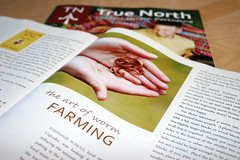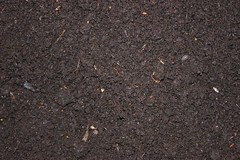by Wonder Worman | Jun 14, 2008 | Red Wiggler World
As with any new project, there may be a time when you are faced with a problem. Vermicomposting is no exception. Whether your worm bin bedding is too dry, too stinky, too big or too small, don’t let these things deter you. Because with every problem there is a solution. And remember, those little Red Wigglers are working for you!
Moisture levels.

When Red Wigglers are at their best, they produce lots of moisture. Their efforts along with the natural process of decomposition increases the moisture level in your worm bin. However, too much moisture can lead to disaster.
If the worms are in a plastic bin, the additional moisture will collect on the walls and lid of the bin. This is not a big problem, but if you notice liquid pooling in the worm’s bedding and the worms are bloated, white and look as though they are trying to escape there is definitely too much moisture and not enough drainage – it’s time to create more holes in the bottom of the bin. This solution will help immediately.
After the excess moisture has been drained, the bedding will still be very moist and adding dry shredded paper to your bin is a good next step. The paper can be newspaper or office paper. Doing this, will soak up the moisture within the bedding. Keep a close watch on the moisture level for the next few days and continue to feed the worms.
by Wonder Worman | Jun 4, 2008 | Out and About, Red Wiggler World
Make sure to check out the June/July edition of Central Oregon’s premiere parenting publication ‘True North’ for a very informative article on Red Wigglers. They mention the benefits of composting food waste and creating your own organic compost. Great job! Visit them online to read the full article, or pick up a FREE copy at a local retailer.
by Wonder Worman | Jun 3, 2008 | Red Wiggler World
Red Wigglers need oxygen just as much as humans do. The interesting fact is they do not have a pair of lungs. They absorb the oxygen into their outer layer from the moist environment in which they live in. They also have the ability to excrete carbon dioxide from their outer layer. It is very important to monitor the moisture level in the worm bin. If it is too dry, they may suffocate – too wet, they may drown. But if it’s just right, you’ll have happy Red Wigglers making poop for you.
by Wonder Worman | May 30, 2008 | Red Wiggler World
This is a Sow Bug, a Terrestrial Isopod. These guys proliferate in dark, damp areas like worm bins. They munch on decaying matter alongside the Red Wigglers causing no harm inside the worm bin (in fact they help out with the composting process), however outside they can cause damage to your plants and garden.
Sow Bugs need constant moisture to survive and are primarily nocturnal so a moist dark worm bin is perfect.
Can you find the Sow bug in my bin?
by Wonder Worman | May 29, 2008 | Less in the Landfill, Red Wiggler World
Red Wigglers can eat most anything. Try testing out various foods that you normally discard after preparing a meal (less meat products and citrus based fruits).
For example, you may have veggies w/ freezer burn – give them to the worms, they don’t mind.
In addition to veggie and fruit waste, Wonder Worman’s Red Wigglers love pasta, left over cheese pizza and home made chocolate chip cookies!
Who knew?
by Wonder Worman | May 25, 2008 | Red Wiggler World
There’s between 800 – 1,200 Red Wigglers at various stages of development in 1 pound of Worms! Those 1,000 or so Red Wigglers will produce a bunch of compost over their life span, which you can then use as indoor or outdoor compost for your plants. The worms will continue to multiply and produce more and more worms. So why not benefit from the joys of Red Wigglers?





